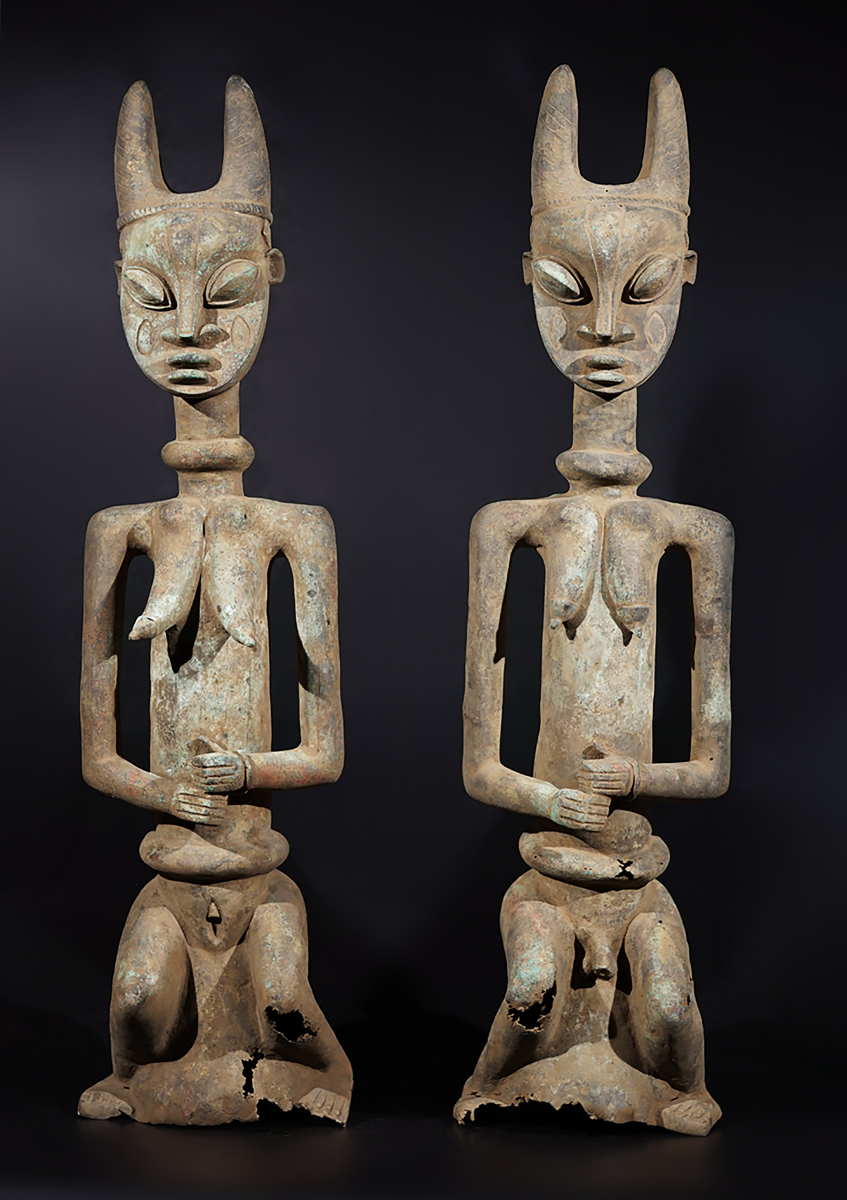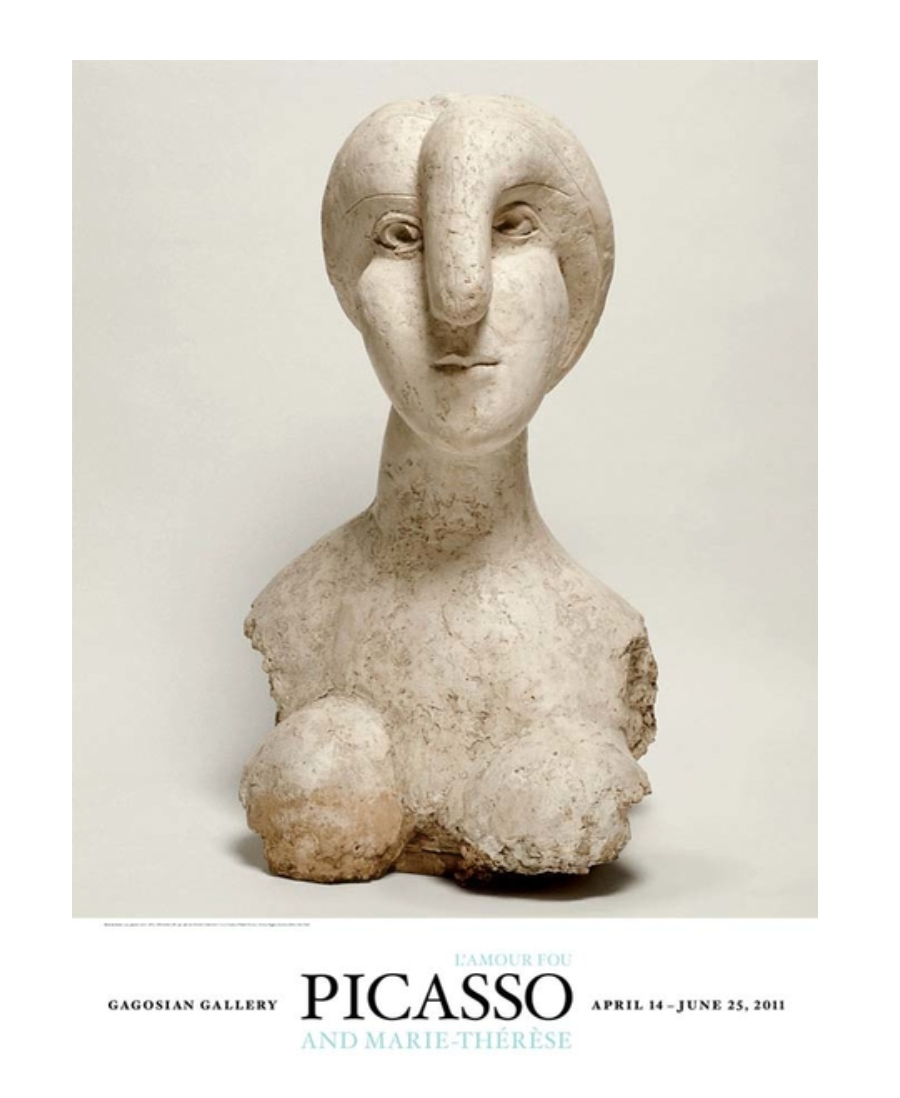|
A fragmentary couple of large Ogboni shrine figures, Nigeria, Yoruba, Ijebu or Owu religion. See Frank Willet, Ife. It seems to be the first time, that a couple of this well known Yoruba sculpture of an old collection is coming to the market. According to the last owner it was once found in a well and not in the earth.
In the Ogboni sanctuary there is also a larger brass figure with protruding eyes and a horn-like hair-style. Its hands form the Ogboni greeting. Morton Williams investigated its secrets and learned that it was Ajagbo, a terrible Alafin of Oyo, who became a revenging spirit and is invoked by the Ogboni society when a divine sentence of death has to be passed. Ajagbo is identified with Onile, the earth spirit. "The style of works in metal and ivory is very different from the style of carving in the Yoruba country. This phenomenon is no doubt to be explained by its completely different function." (The Art of Black Africa, translated by R.A. Wilson, the New York Graphic Society, New York, 1972, pp 174-176.)
Lit.: Leuzinger, Elsy, Kunst uit Afrika: Rond de Niger - De Machtige Rivier, The Hague: Haags Gemeentemuseum, 1971, no. L11. Leuzinger, Elsy, Kunsthaus Zürich: Die Kunst von Schwarz-Afrika, Zurich: Kunsthaus, 1970, pp. 178, no. L11. "Ogboni shrine figures, Bonhams", a similar, single female Bronze sculpture is available on Barakat Gallery, "Large Yoruba Bronze Statue of a Woman", with an estimated age 1800 AD to 1920 AD More information on request Height: 104 cm/ 104 cm
|
 photo: wolfgang-jaenicke.com, for more information, please write us an e-mail with the identification number of the photo identification no. FXG01394.jpg |
According to the UNESCO Convention of 1970, a claim for repatriation expires one year after the authorities of a country of origin have learned where and with whom a cultural object is located. Wolfgang Jaenicke Gallery therefore always informs about every newly imported object. Especially about the bronzes from Nigeria shown on this page, which are published in the internet and are accessible to everyone. Organizations dealing with restitution issues, but also freelance art historians employed by the state, such as restitution experts like Benedicte Savoy, are regularly informed about objects in the Galerie Wolfgang Jaenicke. Every buyer of an art object, regardless whether it is made of wood, terra-cotta or bronze, must be aware that from a European legal perspective, traditional African art usually came from the respective African country of origin with insufficient export documents. Galerie Wolfgang Jaenicke, Berlin, tries to do justice to this dilemma by acting with the greatest possible transparency. The export policy of African states is problematic for art historical research, since African and European dealers usually work covertly due to diffuse legal situations and important information that was passed on from trade to science before 1970 tends to be lost. In case of uncertainties, please contact the managing director of Jaenicke-Njoya GmbH, Wolfgang Jaenicke. It is in the interest of the gallery to clarify any questionable situation with all available means.
|
